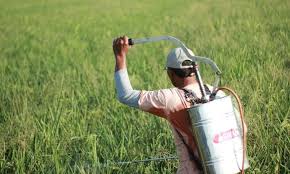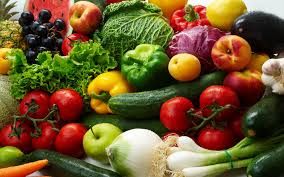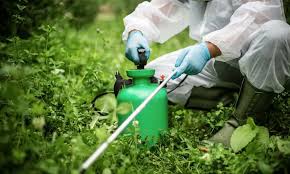Pesticide residues refer to pesticides detectable in or on locations other than their intended target, such as freshwater reservoirs, streambed sediments, and harvested food. High residue levels in these areas are generally considered undesirable.
Residue levels are typically measured and tolerances expressed in parts per million (ppm) to parts per billion (ppb) on a weight basis.
One ppm equates to one milligram in a kilogram, one ounce of salt in 62,500 pounds of sugar, or one pound of pesticide in one million pounds of raw agricultural commodity.
Modern analytical chemistry techniques can detect residue levels below one ppb. Legal tolerances, set by federal and state regulatory agencies, define the maximum pesticide amounts permitted on raw agricultural commodities.
These tolerances ensure consumer safety, varying by pesticide and crop. Exceeding legal tolerances may result in seizure and destruction of affected commodities.
Such issues may arise from agricultural pesticide applications or non-targeted uses, like mosquito control on rice fields. The EPA establishes tolerances before permitting pesticide use on food crops; without a tolerance, application is illegal. Some pesticides deemed “safe” by the EPA may be exempt from tolerances.
Role of Pesticides in Food Production
Pesticides are commonly applied to food crops to control pests that damage crops during production, storage, or transport, increasing usable food yield at harvest and improving quality, safety, and shelf-life.
The pesticide amount remaining in or on food is termed pesticide residue. The U.S. EPA (or Nigerian NAFDAC equivalent) sets maximum residue limits, or tolerances.
By the time food reaches grocery stores, residues are typically well below these limits. Several practices can further reduce exposure to residues.
Read Also: Fattening of Sheep and Goats Guide
Minimizing Pesticide Residues in Agricultural Food

Regulatory agencies ensure pesticide residues in food remain below safe limits. Residues decline as pesticides break down over time and diminish through washing and processing before sale. Low residue levels may persist, even in organic foods. To reduce residues:
- A variety of fruits and vegetables should be consumed to minimize exposure to a single pesticide.
- All produce, including organic and peelable items, must be thoroughly washed.
- Produce should be washed under running water, not soaked or dunked.
- Produce may be dried with a clean cloth or paper towel.
- Firm produce, like melons and root vegetables, should be scrubbed.
- Outer layers of leafy vegetables, such as lettuce or cabbage, should be discarded.
- Fruits and vegetables may be peeled.
- Fat and skin from meat, poultry, and fish should be trimmed to reduce residue accumulation.
Growing a personal or community garden allows control over pesticide use, with Integrated Pest Management (IPM) options minimizing hazards.
Read Also: Sheep Production Guide
Safe Selection and Handling of Raw Produce

Fruits and vegetables, vital for a healthy diet, may carry harmful bacteria from soil or water, risking contamination during growth, harvest, preparation, or storage.
Consuming contaminated produce or juices may cause foodborne illness, termed “food poisoning.” Safe handling practices include:
1. Buying Safely: Produce free of bruises or damage should be chosen. Pre-cut produce, like watermelon or salad greens, must be refrigerated or iced. Fruits and vegetables should be bagged separately from meat, poultry, and seafood.
2. Separating for Safety: Raw produce must be kept separate from raw meat, poultry, seafood, and related utensils. Cutting boards, dishes, utensils, and countertops should be washed with soap and hot water between uses.
3. Preparing Safely: Hands must be washed for at least 20 seconds with soap and warm water before and after preparation. Damaged or bruised areas should be cut away, and rotten produce discarded. All produce, even if to be peeled, must be washed to prevent dirt or bacteria transfer.
Firm produce should be scrubbed with a clean brush, and dried with a clean cloth or paper towel. Pre-washed, ready-to-eat produce, as indicated on packaging, requires no further washing unless safe handling practices are followed to avoid cross-contamination.
Pesticides control pests damaging crops during production, storage, or transport. The pesticide amount remaining in or on harvested food, soil, water, milk, meat, or other commodities is called pesticide residue.
Federal and state regulatory agencies set legal tolerances, the maximum permissible pesticide levels in raw agricultural commodities, ensuring consumer safety. Exceeding these tolerances (Maximum Tolerance Limit=MXL) may lead to seizure and destruction of unsafe commodities.
Residues decline as pesticides break down and through washing and processing before sale or consumption. Contaminated produce or juices may cause foodborne illness.
To reduce residues, undamaged produce should be purchased, raw produce kept separate from meat, poultry, or seafood, and all produce washed before peeling to prevent contamination transfer.
Do you have any questions, suggestions, or contributions? If so, please feel free to use the comment box below to share your thoughts. We also encourage you to kindly share this information with others who might benefit from it. Since we can’t reach everyone at once, we truly appreciate your help in spreading the word. Thank you so much for your support and for sharing!

